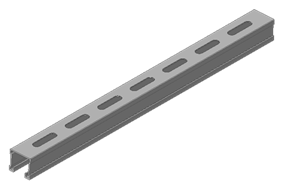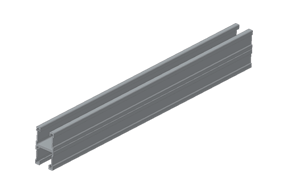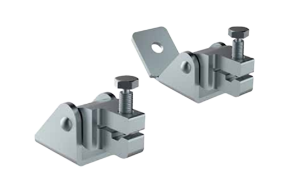Busway are divided into two categories – busway power supply and distribution of electricity. Busway distribution gives power through tap-off units installed in the discharge point, usually located in 0,5 or 1,0 meters. Tap-off units simply
included in the special socket for the power bus bar or a subnet (via the distribution panel), or directly to the machinery. Tap-off units can be mounted directly under the load without stopping, for example, the production process.
Mounted vertically, the same busway can be used to line fare with tap-off units on the floors. (Perhaps the use of certified fire retardant barriers in places of passage through the busway slab floors). The use of protective devices (fuses, circuit breakers with fuses or circuit breakers, circuit breakers) distributed along the length busway, reduces the need for large quantities of cables to the equipment from it.
High-voltage busway carries energy directly from point A to point B. Usually the transformer or switchboard to switchboard. However, if necessary, to the busway trunking can be connected and the tap-off units in any part of the track. This is another example of the flexibility busway systems.
Busway power distribution in medium and high voltage is available in two forms: (a) flat split configuration, where the conductors are insulated or air, or PVC inside a metal casing, (b) configuration of the sandwich, which is becoming the norm for these currents. “Sandwich” construction means that the conductors are individually insulated and alternate with insulating material inside the casing busway. Busway “sandwich” structure has very good strength characteristics, as well as reduced voltage loss.
The compact design of the busway is making it ideal for mounting conditions in the confined space of mines in modern buildings.
Using busway sandwich structure for the main supply of buildings makes it unnecessary to use fire-resistant barriers, as inside the “sandwich” there is no air gap, which could become a conduit for fire and smoke like a chimney.
Support
Popular Products
-
Q How does busway works?
-
Q What is the cost of busway systems compared to traditional power distribution systems?
Low. Historically, the cost of trunking has been a stumbling block for contractors. However, it is easy to estimate the cost of busway compared with similar cable systems – the cost of cable systems increases due to the need for laying more cables, making it difficult to washing and mounting, not to mention the complexity of the operation cable tension to prevent sagging.
Busway cost has fallen in the past few years. Adding to this, the savings in cost due to the time of installation – the installation of the busway dropped to 50% less than cable! The contractor may offer the customer a very competitive price offer in conjunction with greater flexibility in operation and modernization.
Installation time is actually equal to the time of busway installation of cable tray – before installing the cables! This is a very important argument in a compressed time frame for completing installation. -
Q Is it difficult to estimate the cost of the installation trunking project?
No! Its ease on the stage of the design / evaluation prior to installation. This is achieved by the technical characteristics and price of each element of design has always known.
Installation of trunking does not require any special tools. Bends, straight sections and accessories just going to bolt. Busway high and medium voltage supply special bolts with double heads, which provide and demonstrate the necessary degree of downforce.
In addition, the fact that the busway is factory manufactured and tested product, ensures a high quality, more secure installation. -
Q What is the scope of the busway today?
Today, Busway is used in various fields of applications that require current distribution of high and low voltage, including factories, workshops, assembly lines, warehouses, stations, rack servers, data center, supermarkets, etc., etc.
-
Q What are the main advantages of using busway?
Busway has several key advantages over conventional forms of electricity, including
1)Reducing installation time compared to cable systems, which leads to savings.
2)Flexibility in design and in relation to future modifications.
3)Enhanced security, which is achieved by using high quality materials and components,
4)That simplify the design, installation and operation of the busway. -
Q What is the history of busway?
Busway is used for more than 50 years, evolving from the large busway in a heavy metal casing, metal cabinets with bolt-on tap-off units for a fully enclosed steel or aluminum housing with copper or aluminum conductors, fully enclosed diversions block with protected contacts for maximum security.




 Strut Channel
Strut Channel Back to Back Strut Channel
Back to Back Strut Channel Connecting Base Fitting
Connecting Base Fitting


